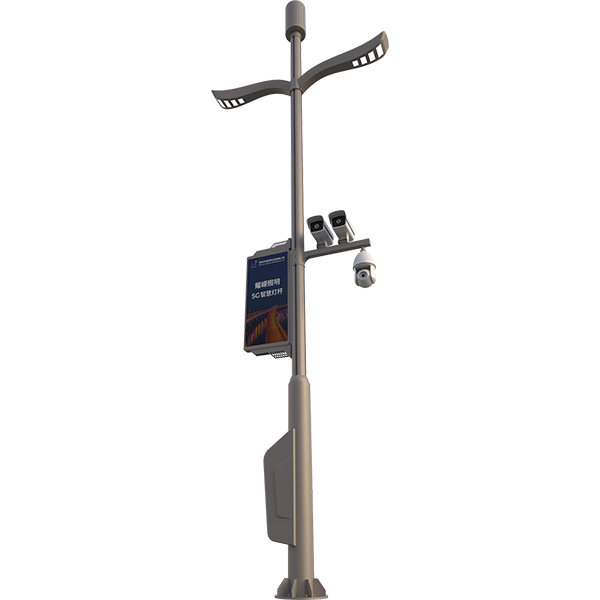Challenges faced by LED smart street light poles

LED smart street light poles can greatly reduce the cost of urban construction, improve the efficiency of urban operation and maintenance, and bring multiple benefits to the construction of smart cities. From a technical point of view, the implementation plan and technology are basically mature, but they are still in the pilot stage. It has not been fully promoted, because there are still many challenges in promoting the construction of LED smart street light poles.
The LED smart street light pole integrates various functions such as smart lighting, video surveillance, traffic management, environmental monitoring, emergency help, wireless network, public broadcasting, advertisement release, charging pile, etc., and has become an important carrier for carrying 5G base stations. At present, the construction of LED smart street light poles has received high attention, but in the process of construction of LED smart street light poles, the operation mode is not clear, the industry standard is not fully determined, and the business model and other problems have also emerged. Therefore, LED smart street light poles are still facing severe challenges. challenge.
1. Insufficient understanding of LED smart street light pole industry
The emergence of LED smart street light poles is a model innovation, not a product technology innovation. At present, the LED street light pole on the market is a "smart light pole" that integrates multiple functions as a carrier, but it is actually just a "multi-functional pole" in hardware. This simple physical integration itself has technological innovation, but it only integrates various technologies in the street light. A mode innovation on the pole can only become a real smart light pole if it is equipped with a business development and intelligent operation platform.
2. Industrial supporting policies have not been clearly implemented
Although LED smart street light poles are at the forefront of the industry, the relevant laws and regulations are still not implemented or imperfect. Most local policies are dominated by departmental regulations, with low legal status and weak legal effect. For example, there is a lack of laws, regulations, rules and regulations for co-construction and sharing of infrastructure construction, management policies for the construction and operation of LED smart street light poles, and incentive and subsidy policies for application business such as base stations and advertising screens.
3. The management mechanism has not yet been perfected, and the development strategy has yet to be perfected
The pilot construction of LED smart street light poles, under the background that the management mechanism has not yet been perfected, it is difficult to sort out the coordination problem of resources of all parties, resulting in serious reduction of the construction scale of LED smart street lights, unclear management mechanism, and imperfect development strategy, which has become a constraint on LED lighting. An important factor in the development of the smart street light industry.
The construction of LED smart street lights needs to go through the stages of decision-making, planning, construction and operation and maintenance. If there is no specific government department in charge, it will be impossible to achieve unified planning, unified approval, unified construction, unified management, and clearly defined rights and responsibilities for urban infrastructure. Without the assessment system, supervision methods, and information communication channels, the co-construction and sharing model of LED smart street lamps will be difficult to implement.






